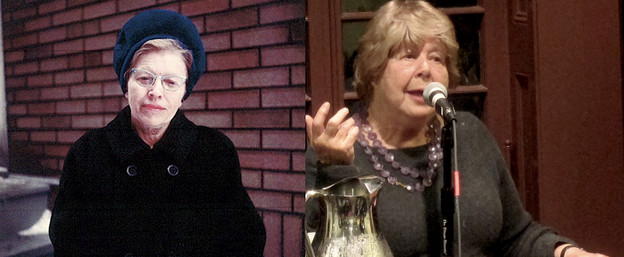
First reading of Lorine Niedecker's 'Popcorn-can cover' (1)
Marjorie Perloff

Popcorn-can cover
screwed to the wall
over a hole
so the cold
can’t mouse in
— Lorine Niedecker
When this poem arrived in my mailbox it had a familiar ring, and, sure enough, when I took from the shelf Lorine Niedecker’s Collected Works (my only preparation for this “first reading”), I saw that the poem was originally published in 1965 in Ian Hamilton Finlay’s marvelous little magazine Poor.Old.Tired.Horse. Serendipity: I had just come home from the opening of my daughter Nancy Perloff’s Concrete Poetry exhibition at the Getty Research Center, an exhibition centering on Finlay and Augusto de Campos. There, in the cases, are all those issues of Poor.Old.Tired.Horse with such Finlay gems as FOUR SAILS and STAR — those tiny ideogrammatic poems where every word, syllable, and morpheme counts in the verbivisual construct. Finlay and Niedecker were very close.
This five-line, sixteen-word poem is brilliantly articulated. There could be another “cover” “screwed to the wall” — perhaps the cover of a can of baked beans or Campbell soup. But popcorn cans — those familiar throwaways — are much more suitable for Niedecker’s purpose because the “pop” suggests that the can’s cover won’t stick: POP and the cold will “mouse” in, or again, POP and a mouse itself will come out of the hole. Then, too, “can” can be read as an auxiliary verb: popcorn can be used to stuff into holes but how long will it stick?
“POPcorn CAN COVer: three — almost four — heavy stresses on five syllables with the heavy alliteration of hard cs and assonance of os. It sounds like the opening of a nursery rhyme or children’s song but line two is matter-of-fact: “screwed to the wall.” Not taped or pasted, screwed — the word having unpleasant connotations as in “Stop screwing around” or “I’m really screwed.” And then that fantasia of os — four of them in six short words: over a hole / so the cold, “hole” almost rhyming both with “cold” and with “wall” in the preceding line. It makes perfect sense to cover that hole in the wall, but only a poet as skilled as Niedecker would have used the verb “mouse” in line five. “Can’t come in” or “can’t seep in” would have conveyed the literal meaning perfectly, but “mouse” suggests the cover’s dual purpose: this is probably a mouse hole, and what lightweight popcorn-can cover will keep out the mice? “Mouse in,” for that matter, also suggests “muscle in” (muscle comes etymologically from the Latin mūs, or “mouse”): something there is that is trying, for better or worse, to get through that wall!
Niedecker is a deceptively modest poet: one would think, at first glance, she is making no more than a small, trivial observation. But of course her tiny ideogram is a case of what Pound called language charged with meaning. For what the poem does is remind us that we are always trying to rationalize the steps we take to accomplish or prevent something. Who would think that screwing a popcorn-can cover to the wall can keep the cold at bay? Much less a mouse finding its way through that hole? Yet we do these things anyway because it makes us feel better to act.
What about the poem’s sexual connotations? “Pop,” “cover,” “hole,” “screwed,” “mouse in”: the words, some readers would say, are obviously loaded. But the syntax, deceptively straightforward as it is, suggests otherwise: it wants us to take the information doled out at face value. This is, so to speak, a homeowner’s poem. And yet there is nothing “simple” about Niedecker’s craft: even in that last line she has placed her mouse between the an of “can’t” and the final in. A mousetrap of sorts, perhaps more efficient than the cover of the popcorn can.